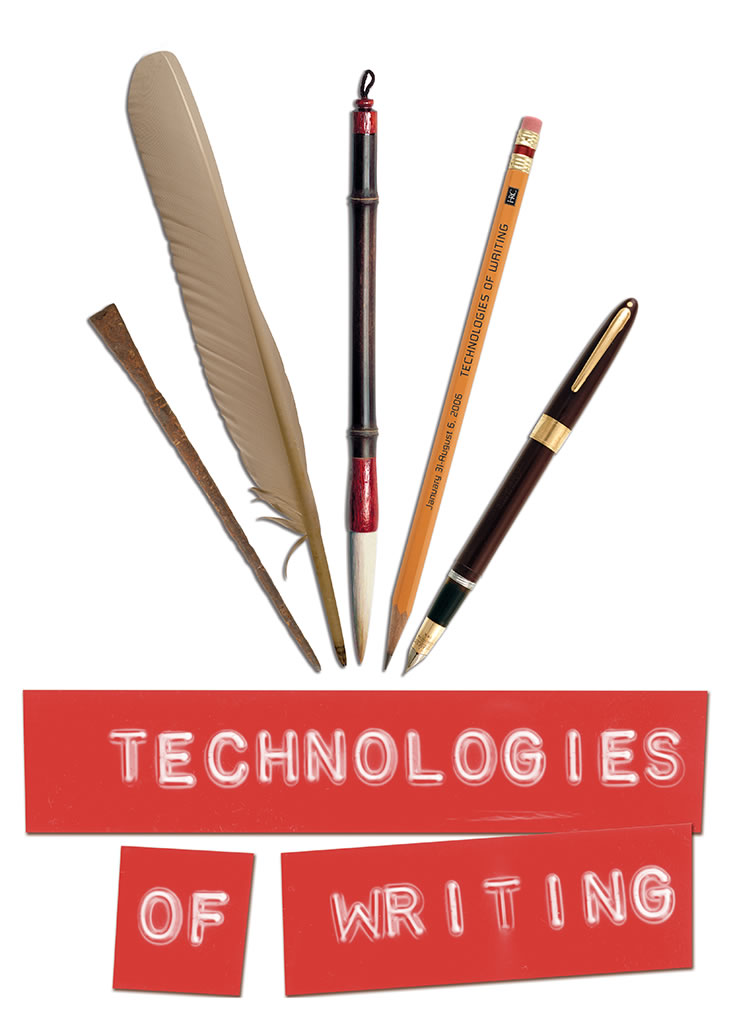Technologies of Writing
January 31, 2006 – August 6, 2006
Writing is perhaps man's greatest invention. Not even the development of language is comparable, for all species have language. But writing is what enables language to be copied and stored. Writing is memory. It is what makes us human.
If by "writing" we mean the ability to inscribe on some surface our human response to the world around us, then the origins of writing go back 20,000 years. If by "writing" we mean a codified system of inscribed signs, then it is 6,000 years old. Perhaps the most astonishing thing about writing is that its development is ongoing, constantly responsive to technological innovation.
The exhibition, "Technologies of Writing," will document the evolution of writing. It has not always been clear whether the technological innovations in writing caused social change or whether new social necessities demanded speeded-up modes of writing, but what is clear is that no significant alteration of the human condition has occurred without a corresponding change in how writing is produced, stored, or reproduced.
All the significant technological breakthroughs of the century just ended—the invention of the typewriter, the xerographic copier, the fax machine, the personal computer—altered writing by accelerating the reproducibility of writing. Today, writing, like money, need not assume a material form at all but can be instantly sent and received as structured electronic pulses, even as the machinery of doing so retains the nomenclature of earlier technologies—web pages and the act of scrolling are obvious examples, but even boot up may recall the old-fashioned need to trim a quill before starting to write.
The exhibition will feature a wide range of objects, from cuneiform tablets to electronic texts, and will offer visitors a chance to record their own thoughts about writing using a number of different writing technologies.


